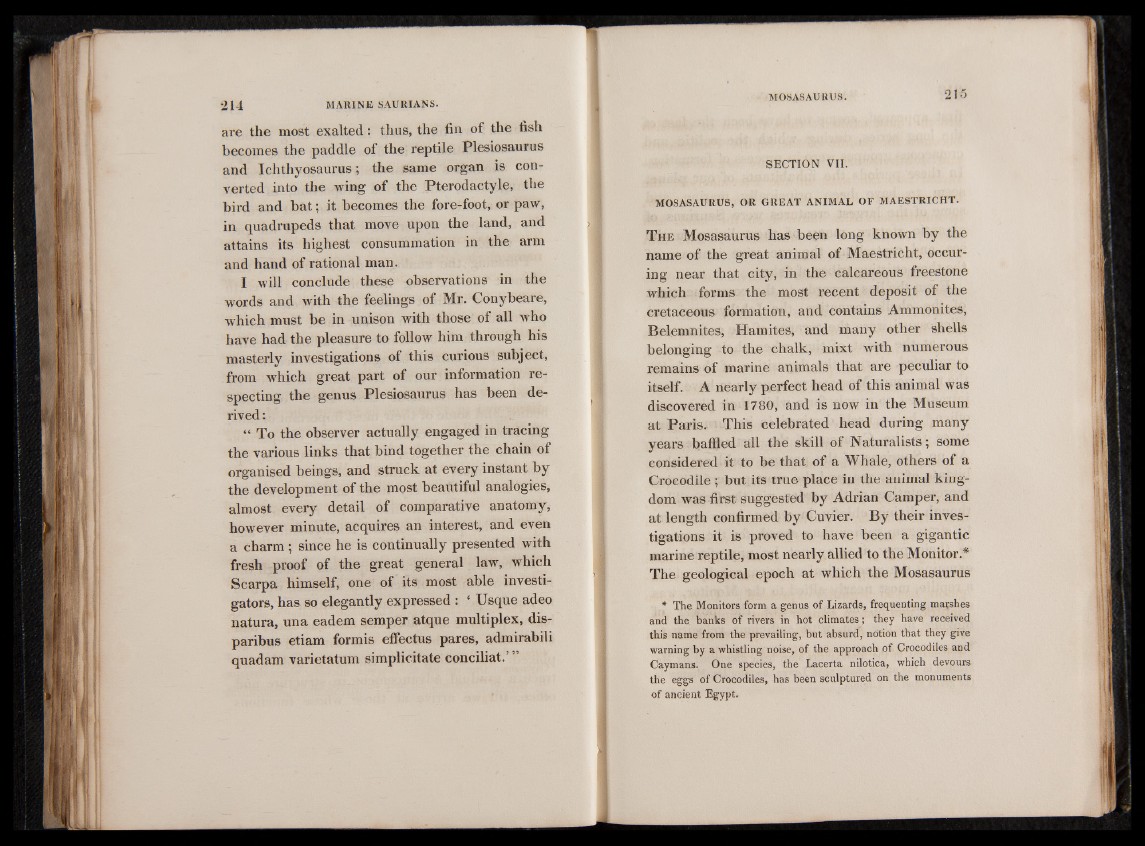
are the most exalted : thus, the fin of the fish
becomes the paddle of the reptile Plesiosaurus
and Ichthyosaurus; the same organ is converted
into the wing of the Ptérodactyle, the
bird and bat; it becomes the fore-foot, or paw,
in quadrupeds that move upon the land, and
attains its highest consummation in the arm
and hand of rational man.
I will conclude these observations in the
words and with the feelings of Mr. Conybeare,
which must be in unison with those of all who
have had the pleasure to follow him through his
masterly investigations of this curious subject,
from which great part of our information respecting
the genus Plesiosaurus has been derived
;
“ To the observer actually engaged in tracing
the various links that bind together the chain of
organised beings, and struck at every instant by
the development of the most beautiful analogies,
almost every detail of comparative anatomy,
however minute, acquires an interest, and even
a charm ; since he is continually presented with
fresh proof of the great general law, which
Scarpa himself, one of its most able investigators,
has so elegantly expressed : ‘ Usque adeo
natura, una eadem semper atque multiplex, dis-
paribus etiam formis effectus pares, admirabili
quadam varietatum simplicitate conciliât.’ ”
MOSASAURUS. 215
SECTION VII.
MOSASAURUS, OR GREAT ANIMAL OF MAESTRICHT.
The Mosasaurus has been long known by the
name of the great animal of Maestricht, oceur-
ing near that city, in the calcareous freestone
which forms the most recent deposit of the
cretaceous formation, and contains Ammonites,
Belemnites, Hamites, and many other shells
belonging to the chalk, mixt with numerous
remains of marine animals that are peculiar to
itself. A nearly perfect head of this animal was
discovered in 1780, and is now in the Museum
at Paris. This celebrated head during many
years baffled all the skill of Naturalists; some
considered it to be that of a Whale, others of a
Crocodile ; but its true place in the animal kingdom
was first suggested by Adrian Camper, and
at length confirmed by Cuvier. By their investigations
it is proved to have been a gigantic
marine reptile, most nearly allied to the Monitor.*
The geological epoch at which the Mosasaurus
* The Monitors form a genus of Lizards, frequenting marshes
and the banks of rivers in hot climates; they have received
this name from the prevailing, but absurd, notion that they give
warning by a whistling noise, of the approach of Crocodiles and
Caymans. One species, the Lacerta nilotica, which devours
the eggs of Crocodiles, has been sculptured on the monuments
of ancient Egypt.